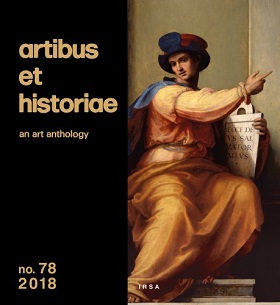 Dulcia Meijers, An opening remark
Dulcia Meijers, An opening remark
Carlo Corsato et Juliette Ferdinand, Introduction
Giulia Forti, List of Bernard Aikema’s publications
Articles
Denise Zaru, Creating a devotional space. Architectural metaphors in Venetian Renaissance altarpieces
Arvi Wattel, Good vibrations, Mutual love in Garofalo’s frescoes for Antonio Costabili
Bram de Klerck, Fra Bartolomeo : the depiction of landscape and the use of devotional images
Erlend de Groot, Unappealingpaintings, great sories : two steal lifes from the kitchen of the Muiderslot
Isabella di Leonardo, "Een Italische Keucken van Dirick de Vriese". Commercializzare l’identità artistica tra Venezia e il "Nord"
Andrea Leonardi, Nobili genovesi nel Regno di Napoli. Michele IV Imperiale (1719 - 1782) principe di Francavilla tra gusto per l’antico e cultura figurativa veneta
Maria Forcellino, A Dutchman in Venice : Johan Meerman and his Grand Tour of Italy
Carlo Corsato, Colour of devotion : Veronese’sCrucifixion in the Musée du Louvre
Thomas dalla Costa, Drawings and draughtmanship in Sixteenth-century Venise : Tintoretto and Veronese in comparison
Francesca Cocchiara, Intrecci vicentini per Giulio Carpioni e Francesco Ruschi attraverso le incisoni di Giovanni Georgi e Giacomo Roffoni
Juliette Ferdinand, The French translation of Albrecht Dürer’s Four Books on Human Proportion : a "crime de lèse-majesté divine" ?
Andrea Polati, Un Giorgione impossibile : l’Allegoria della vita umana e la collezione Cassinelli di Genova
Ariano Aymonino, Ludovico Dolce’s Aretino : its fondational role in the theory of Classicisme and its eighteenth-century revival
Lubomir Konecny, Leonardo da Vinci’s Battle of Anghiari revisited
Barnaby Nygren, Savoldo’s Saint Matthew and the angel : problems of iconography and interpretation
A. Victor Coonin, Beyond the binary : Michelangelo, Tommaso de’Cavalieri and drawing at Windsor castle
Guy Tal, A chimerical procession : invention, emulation, and the language of witchcraftin Lo stregozzo
Marilyn Aronberg Lavin, A faun in love : the Bernini sculpture in the Metropolitan Museum of Art
Marek Walczak, Between the Eternal City and Cracow. On the origins of the iconography of Saint Hyacinth of Poland OP (d. 1257)
Summaries
Informations about the authors
